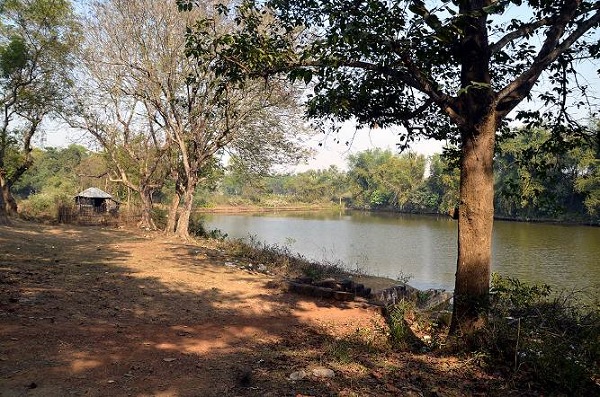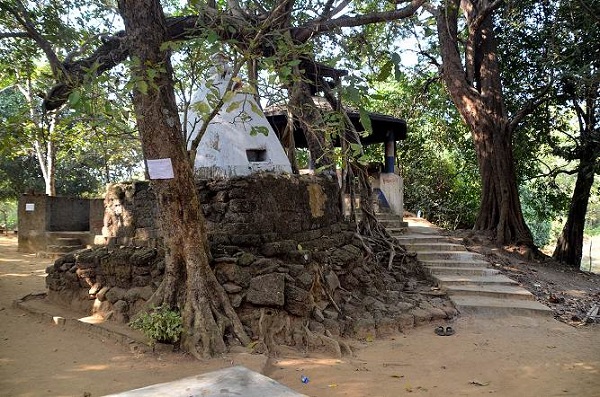Dec 23, 2025
Dec 23, 2025
Not many Bengalis know that Bengal has the “claim” to be the locale, the birthplace of Ramayana. I say “claim” because travelling across Bharata-India one would definitely come across places associated with Ramayana and Mahabharata narratives, and often narratives that are not to be found in classical Ramayana and Mahabharata text. Some of these narratives are to be found in the classical Puranas, and/or Sthala-Puranas; however, some go beyond that.
Indeed, Ramayana and Mahabharata are living Mahakavyas that integrates Bharatavarsha, and had been the glue to cultural and political unity of Bharatavarsha for centuries.
The Ramayana and Mahabharata narratives not found in Classical Texts, Puranas and Sthala-Puranas are generally categorized as Folk Ramayana and Folk Mahabharata. However, ‘folk’ should not be a misnomer in this case because Itihasa-Purana as genre being mentioned in Vedas predates the Mahakavyas. Therefore, the memory retained by the ‘folk’ might be ancient to written texts.
Here is information on the holy places and their associated narratives of Ramayana, based on information collected from various written sources and my personal visit to the places on January 5, 2021.
1. Rameshvara Shiva Temple and Pond
Visiting the place, one finds a temple enveloped by the remnants and ambience of an older temple. Only a few of the pillars standing like sentinels at regular intervals and decaying bases of the old temple are still there. At the top of each pillar sits Nandi bull – the statues bear clear traces of new additions, perhaps as part of the plan of the new temple to mark continuity with the old one.
The new-of-the-old temple – the present temple - is built in Orissa style of architecture with the Big Deul or Vimana hosting the Garbhagrha (Sanctum Sanctorum), Jagamohana or Mukhasala or Hall of Audiences, and the Nata Mandira or Festive Hall. The construction is however, flat with no reliefs on the outer walls pointing to a short-timed construction.


The New temple and remnant pillars of the old temple

Pillars of the old temple

Karttika on the inside wall of the sideway to the Sanctum Sanctorum
A passage of low height stairs leads from the entry side of the temple to the Rameshvara Sarovar (pond) amidst scenic nature’s lap. The pond is likely the remnant of Suvarnarekha River which has now receded a hundred metres away from the stairs.

Rameshvara pond
I have found three Ramayana narratives concerning the places and temple.
One is that: Rama, Sita and Lakshmana stayed at this place on the bank of Suvarnarekha River for some time in course of their Forest Exile, and they worshipped Shiva and founded the Shiva temple. The name Rameshvara Shiva gains from that event. Later a temple was constructed, but following its decay over time, another temple was constructed, which is now in place.
The second narrative goes as follows.
After Forest Exile, when Rama was ruler of Ayodhya, he and Sita once visited the place and Valmiki’s Ashrama in nearby Tapovana, and Rama got the Shiva temple constructed by Vishvakarman at the behest of Sita.
The third narrative is about Mahakavi Valmiki.
After Rama had the temple constructed by Vishvakarman, Rshi Valmiki had started composing Ramayana at the footsteps of this Temple.
I did not find any Archaeological Survey of India board and information on the possible datings of the site.
The present West Bengal Government has taken steps to preserve the heritage and develop it as a tourist site. However, there is no place to stay, and one has to visit the place either from Jhargram or Kharagpur.
2. Tapovana
Tapovana is at a distance of 7 km from Rameshvara temple amidst dense lush forest of the Chandabila forest range which is presently under the Kharagpur division. Wild elephants frequent the place. The forest department has set up a notice cautioning visitors against wild elephants and urging not to venture into the forest.
The caution is necessary because other than pilgrims, picnic parties frequent the spot and often create nuisance. This hazard to environment should not be tolerated by the administration.

Tapovana, Valmiki Ashrama

Lakshmana, Sita, Rama, Valmiki and Narada (left to right) inside the temple
At the Tapovana Valmiki Ashrama, a brooklet known as Sita Nala flows by. The stream, a tributary to the Suvarnarekha River, originates in the Chandabila forest and meets the Suvarnarekha near Khandalpara opposite to a delta now known as the Kodopal Eco-tourism spot.

Sita Nala
The scenic beauty of the stream meandering through dense green is a joy to the eye and senses.
The Ramayana narratives associated with the place are immense in significance because it gives Bengal a claim to the creation of the Ramayana.
This was the place where Sage Valmiki prior-to-transformation-incarnation as Dasyu Ratnakar used to live in and rob people.
The Mahabharata provides hint on Valmiki’s early life. In the Anushasana Parvan (13.18), Valmiki tells Yudhishthira that he had once incurred the sin of Brahmanicide by curse of certain ascetics, and he was cleansed of that sin by Shiva’s grace.
Valmiki composing Ramayana at the foot of Rameshvara temple indeed establishes the Valmiki-Shiva connection.
The Nagara Khanda of the Skanda Purana narrates in its section on the creation of Mukhara Tirtha that Valmiki was born a Brahmana named Lohajangha and was compelled to take to robbery during a 12-year long famine, to feed his hungry parents, wife and family. Once the Saptarshis came that way, and he tried to rob them in vain. The Saptarshis took pity on him and made him see his folly. Later, by their grace, Valmiki became absorbed into meditation so much so that anthill or Valmik grew around him. When the Saptarshis were returning that way, they heard him chanting Mantra and named him Valmiki.
Another Sthala-Purana narrative of Tapovana follows the Ramayana Uttarakanda narrative of Sita giving birth to Laba and Kusha in Valmiki’s Ashrama. This Tapovana was that Ashrama of Valmiki. And Ramayana too was born here.
Another claimant to the locale of Valmiki’s Ashrama is in Chitwan district of Nepal, inside Chitwan National Park. It is close to the Triveni Dham where Tamasa, Sona and Sapta Gandaki rivers meet.
3. Conclusion
As per Uttarakhanda, Valmiki’s Ashrama could have been beside the Ganga. When Lakshmana left Sita in Valmiki’s Ashrama, it is narrated, he crossed the Ganga to reach Ayodhya. Now, the course of Ganga, at present is further North and East to the present course of the Suvarnarekha River. If Ramayana Itihasa refers to a timeline more than 5000 years back, then the courses of the rivers could definitely have been different and have changed over time. So, we cannot think anachronistically to negate the locale of Valmiki’s Tapovana beside present Suvarnarekha.
Besides, it is the Bharatiya tradition to regard every river as Ganga. Suvarnarekha is Ganga too in that way.
Later, in another narrative in Ramayana Uttarakhanda, the poet narrates, Shatrughna went west from Valmiki’s Ashrama and reached the bank of Yamuna in seven days. Therefore, the eastern location of Valmiki’s Ashrama is as per the Classical Ramayana.
The claim of the Bengal Tapovana as Valmiki’s Ashrama is therefore, more logical than that of Nepal. However, the purpose of my article is not to make such claims on behalf of Bengal as a Bengali.
Indeed, what matters more than arguing on the locale of Valmiki’s Ashrama is the fact that Valmiki, Rama and Ramayana belong to the whole of Bharatavarsha, call it localization or whatever.
The Ramayana Itihasa is alive.

Valmik or ant-hill inside the Valmiki Ashrama, a very symbolic scene
All photographs © author
How to Reach:
Jhargram, now a district with its administrative centre at Jhargram city, is approximately 170 km from Kolkata. The district was formed on 4 April 2017, after bifurcation from the Paschim Medinipur district as the 22nd district of West Bengal.
Rameshvara temple is 44 km from Jhargram via SH 5 and Lodhasuli - Ragra Main Rd. However, this access is possible only if the seasonal earth bridge over Suvarnarekha River is open and operational. Otherwise, one has to go via Sardiha- Gopiballabpur- Hadhadi- Kharikamathani- Nayagram- Bhasraghat Rd and then the distance is 65 km. The temple is 45 km from Kharagpur.
References
1. https://jhargram.gov.in/tourist-place/rameswar-temple/
2. https://en.wikipedia.org/wiki/Valmiki_Ashram
16-Jan-2021
More by : Indrajit Bandyopadhyay